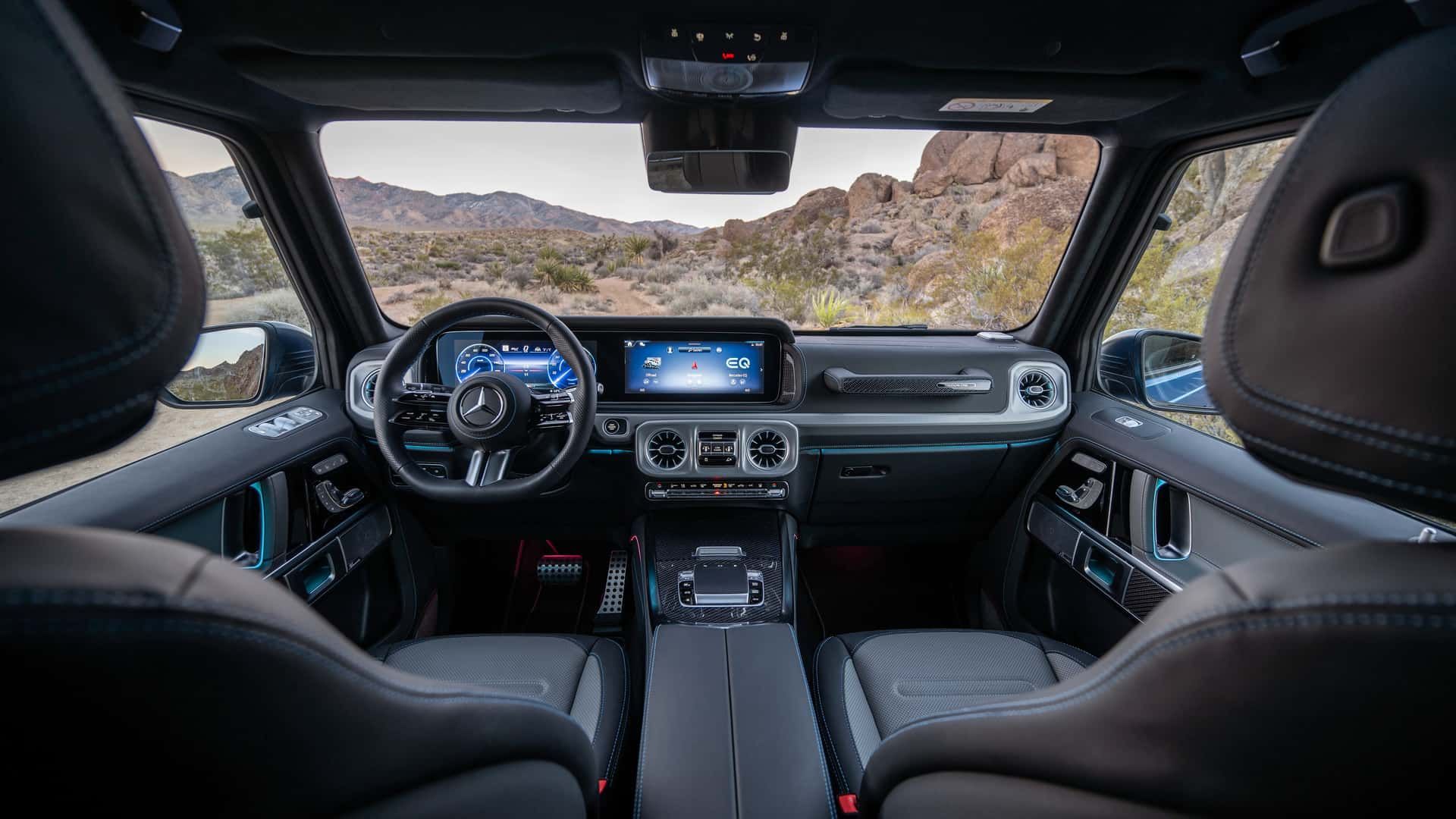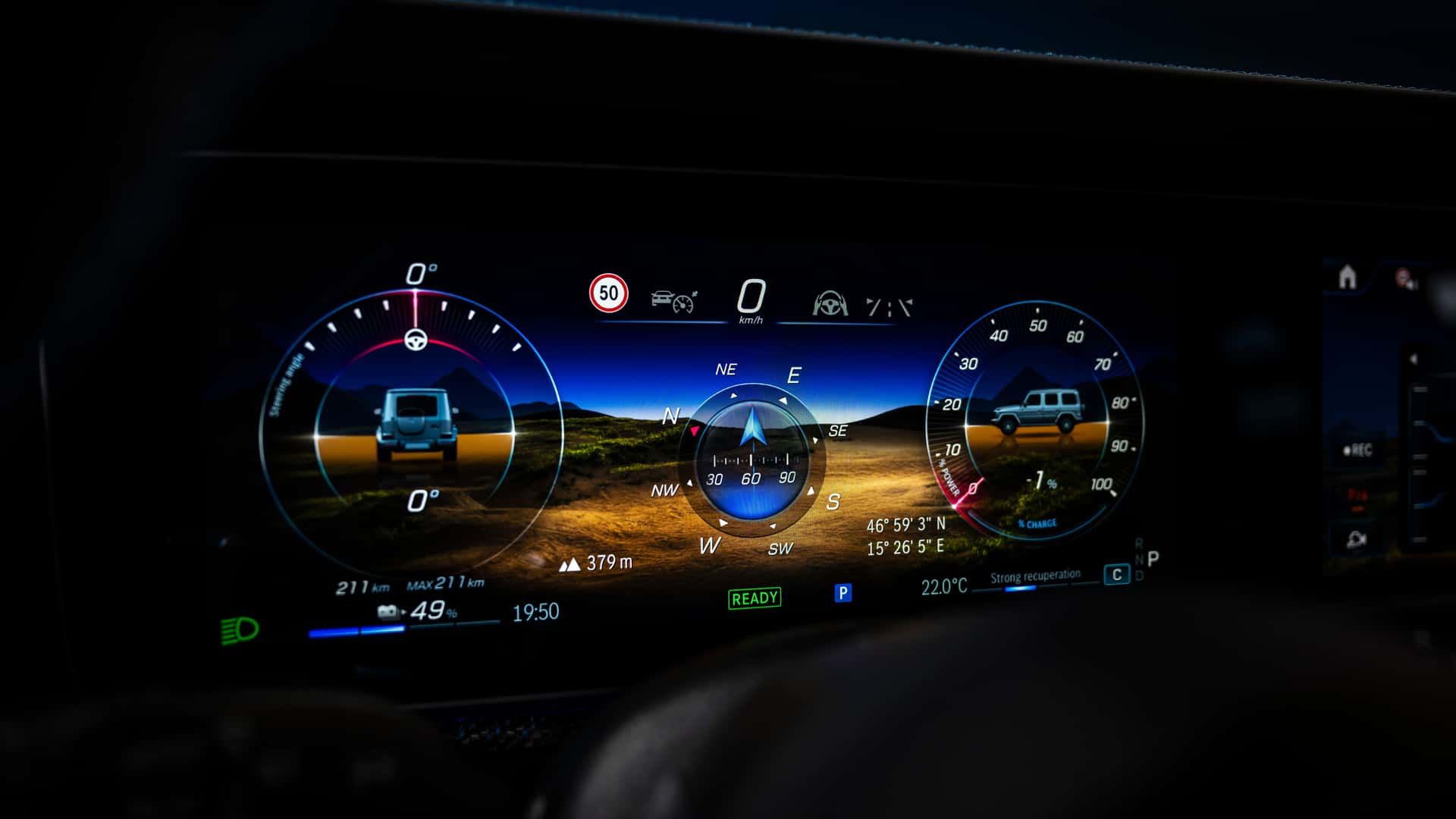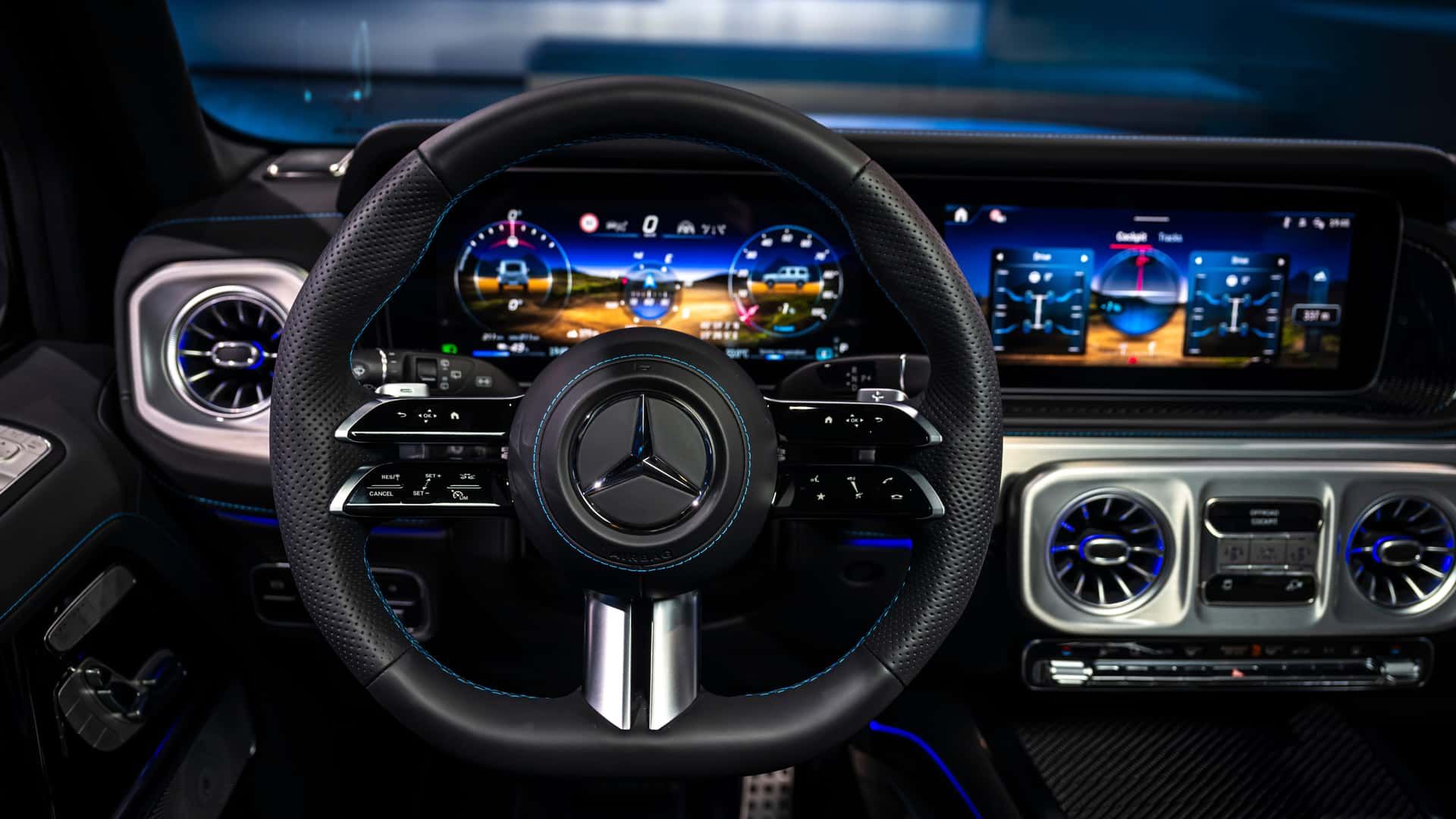The German car manufacturer Mercedes has officially presented the new, fully electric G-class, the company promises that no compromises were made in the development process and that the electric car is even better than the G-class with an internal combustion engine. Although we knew this model as the EQG during development, in the final version it is simply the G580. Namely, Mercedes has changed the car naming strategy, electric models gradually abandoning the EQ designation.
Although at least the design of the electric version differs minimally from the regular model, Mercedes has done a lot of work to streamline aerodynamics. Within the limits of possibilities, of course. A redesigned A-pillar, an aerodynamically shaped bonnet and a few other bits mean the G580 has a drag coefficient of Cd 0.44. This is, of course, far from ideal, because if we talk about truly aerodynamic machines, this coefficient fluctuates around 0.20, even lower. Of course, it is impossible to call the G-class an aerodynamic car. True, this is still better than the regular version (0.48), not to mention the previous generation (0.53).
“The G-Class is and remains the G-Class. It’s not just the name or the sound. Our goal was to make the drive system work without compromise and provide off-road capability,” says Manuel Ursteger, the man responsible for the electric drive system for the Mercedes G-Class.
The car is equipped with four electric motors, one for each wheel, which develop 579 horsepower and offer an impressive torque of 1165Nm. These electric motors are specially designed for the needs of this machine and each of them has a separate two-gear gearbox. Ursteger points out that the complex powertrain system was developed specifically for this machine and will not be available on other Mercedes models. “It was a complex project, but we met all our goals and this car is better off-road than the regular G-Class,” says a Mercedes representative.
Acceleration to 100 km/h is done in less than five seconds, but off-road capabilities were said to be one of the main key tasks during the development of the car. The car is equipped with a “low-range” gearbox, and it is also able to cross water obstacles up to 85 centimeters deep. This is possible because all electrical units are properly insulated. This limitation only exists because it is limited by the height and location of the charging plug.

The car has several additional functions specifically for off-roading – the front cameras display the image on the multimedia screen, which makes it easier to see and overcome obstacles. Also, the machine has “G-Turn” – this function allows you to turn on the spot, around its axis, as well as other steering features, exactly with the idea of driving in off-road conditions.


The car uses a 116kWh battery, but the battery packs are specially designed for this car to be integrated into the chassis as a structural element. Technically, the battery is identical to the one used in the EQS, providing fast charging options with a power of up to 200kW, while a fully charged machine can travel around 470 kilometers in the WLTP cycle. To protect the battery, a special protective plate has been created at the bottom of the car. The car is rather shallow and heavy – its curb weight is an impressive 3085 kilograms. The starting price in Germany is from 140 thousand euros.










